Sept. 20 to 26, 2024 17 Elul, 5784 • Ki Savo Vol. 23, No. 32
Reach the Star: Editor@TheJewishStar.com 516-622-7461 x291



Sept. 20 to 26, 2024 17 Elul, 5784 • Ki Savo Vol. 23, No. 32
Reach the Star: Editor@TheJewishStar.com 516-622-7461 x291


Former US Ambassador David Friedman’s new book, “One Jewish State: The Last, Best Hope to Resolve the Israeli-Palestinian Conflict,” published on Sept. 3 by Humanix Books, presents what he believes is a coherent political doctrine aimed at shifting approaches and perceptions.
In it, the native of Woodsburgh in the Five Towns argues that Israeli rule over the entire territory not only aligns with Israel’s biblical and historical right to the land but will benefit Arabs as well as Jews.
Sovereignty Journal (ribonut.co.il) held a three-way conversation with Friedman and MK Ohad Tal, a key figure in advancing President Donald Trump’s plan within the Israeli political arena.
Friedman said the application of Israeli sovereignty would advance two political goals.
“No. 1 is to bring stability, safety, security, prosperity for the State of Israel. No. 2 is to be faithful to the will of G-d with regard to the way in which the Jewish people should hold the Land of Israel.”
“I don’t think it can happen overnight,” and the State of Israel must craft its course “by a meaningful consensus … through a process which is deep and robust and thoughtful.”
Friedman cautiously adds that the discussion around such a move needs to be approached differently from the hasty manner in which judicial reform was promoted “by a narrow majority. … This issue is much bigger and if it’s going to go forward, it must do so with the support of a sig-
By Ed Weintrob, The Jewish Star

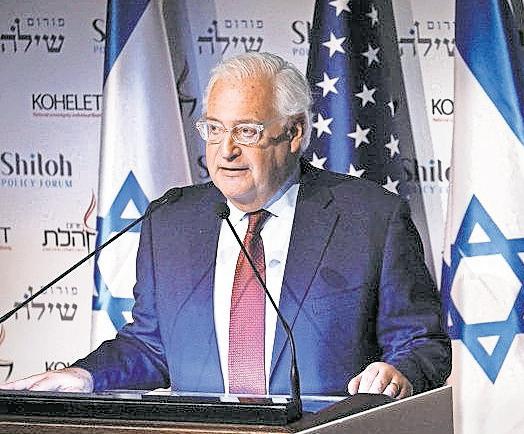
nificant majority of the people in Israel.”
“There needs to be a real plan,” he said. “How is Israel going to be a sovereign over what could be an additional two million Palestinians? How will Israel separate the ones who want to be peaceful from the ones who continue to want to commit acts of terror? How does Israel pay for it?
Israel advocacy will be on menu during a Shabbaton this Friday night at the Orthodox shul in Brooklyn Heights.
Yishai Fleisher, international spokesperson for the Jewish community in Hebron, plans to tell congregants that “we’re all IDF soldiers now,” and that there are many ways to flight for Israel without picking up a gun.
“Strenthening our Yiddishkeit” is high on his list, he told The Jewish Star. “Take on another mitzvah, find another way to connect to our Torah, to our Jewish values.”
Fleisher’s appearance at Congregation B’nai Avraham is part of the synagogue’s one-year commemoration of Oct. 7. He will speak during dinner on Friday night and at services on Saturday morning and afternoon.
The shul’s spiritual leader, Rabbi Aaron Raskin, said that “it’s important in this chaotic world that we hear about Israel with clarity, from a strong proud Jew” like Fleisher.
While B’nai Avraham is a traditional synagogue with a

It’s going to involve a lot of money to assume responsibility for an additional two million people.”
His answer: “An expansion of the Abraham Accords, convincing Saudi Arabia and the Emirates and other countries that this is the best outcome for the region and even for the Palestinians.”
Friedman hopes his plan can unite diverse
groups: those that promote Israeli sovereignty, those concerned with Palestinian welfare and those focused on issues of human rights or national security. “I wrote a 240-page book about it and I try to address all those complicated issues,” he says.
“It’s crucial that it be presented in this way, and not simply as a small minority of the population grabbing territory at the expense of someone else.”
Tal observes that “Ambassador Friedman’s proposal represents a significant departure from the thinking we’ve grown accustomed to, certainly over the past 30 years.”
Friedman’s plan focuses “on the well-being of the people themselves,” Tal said. “It suggests setting aside ideologies momentarily to explore how we can implement a tangible solution for the people on the ground.”
Friedman emphasizes that his plan bypasses Palestinian leadership and communicates directly with the people living in Judea and Samaria.
“The Palestinian people have lost faith in their leadership. They see how aid money ends up in the leaders’ pockets — Ismail Haniyeh’s children are fighting over a multi-billion-dollar inheritance, Arafat’s widow shops on the Champs-Élysées,” the ambassador says.
“Beyond that, the plan is not an agreement, a contract or negotiations, all of which have proven to be a waste of time. The Palestinians will never say please come and take over our territory, but
See Friedman’s fresh path on page

decidedly pro-Israel tilt, it’s housed in an uber-liberal Brownstone Brooklyn neighborhood.
Asked whether Fleisher’s appearance might upset the neighbors, Rabbi Raskin responded that “I’m not concerned. People have their opinions but people in the middle are looking for answers and Jewish pride.”
Asked what he’d say to people who criticize Israel because of the high number of casualties in Gaza, Fleisher said “I also have a critique of Israel, but it comes from the other direction, which is that Israel has allowed its enemies to become entrenched.”
“We gave away the Gaza Strip in 2005,” he continued. “People like myself protested that, and we said that what would happen is that Gaza would be taken over by terrorists who would use Gaza as a launching pad against Israel’s Jewish people, and that’s what happened very quickly.
“We have faced tens of thousands of rockets [and] the creation of a humongous tunnel system.”
Continued from page 1
nor will they ever say, please don’t take our territory if they see it happening.”
Friedman explains: “Meaning: Don’t ask them! We don’t need to ask the Palestinians whether they’re willing to give up something that they’ve been promised by their leadership for the last 50 years. You don’t need to have a discussion like that. What the State of Israel needs to do is to come in and say we are asserting our sovereignty under these terms, and here are the opportunities available to the Palestinians.
“And I believe that they will accept it, but not in a formal way.”
“The Palestinian people have never lived under their own authority,” Friedman said. “I mean, they’re the majority of Jordan. Do you see them protesting in Jordan? Maybe 50 years ago. But they have shown an ability to accept living within the sovereignty of another country.”
Tal considers Friedman’s vision pragmatic, despite its challenging complexities. “We’ll have to consider how to deal with those who want to keep fighting us,” the Israeli lawmaker says.
How might the world react to such a move?
“That depends on a number of things,” Friedman said. “The first and most important is that the State of Israel has to decide on sovereignty, and the second is that it has to be a serious decision, not one established on a narrow majority of 61 votes [in the 120-member Knesset]. When that happens, when Israel respects itself, the world will respect it. The key is to do it with a broad consensus.
“Afterwards, the United States, under a Republican administration, understanding the full scope of the move, would likely support it. We’ll need to work with Saudi Arabia and the Gulf states, and there’s a real possibility they’ll agree once they see how the plan improves Palestinians’ lives. What it requires at all time is that it be presented as a win-win-win plan.
“As for Europe, it’s uncertain what will happen there, but I believe that within five to 15 years, this issue will fade from the global focus as
other concerns take precedence,” Friedman says.
Tal adds, “It’s not what the gentiles say that counts, but what the Jews do,” invoking the well-known saying by David Ben-Gurion. “In this context, in the aftermath of Oct. 7, we as Israeli society need to reflect on the past 76 years and the last 30 years and see how we can learn from our mistakes rather than recycle them. This plan is an opportunity to do just that.”
In his remarks, Friedman noted anticipated support from a Republican administration for the plan. However, is such support certain, given that some may view it as conceptually different from Trump’s business-oriented approach, which led to the presentation of the “deal of the century” during his term?
Friedman does not accept the characterization of his plan as a “nonbusiness” plan, even if it doesn’t involve Arabs receiving percentages of territory, a flag, government or a state.
“The model for this are the Israeli Arabs, the Israelis who live inside the Green Line. You know, they participate in the Israeli economy, the educational system, the homeownership. In some respects the Christian Arabs in Israel do better than anybody, including the Jews.
Friedman would sidestep — “for a minute, because it’s complicated” — the right to vote in national elections. “The idea is to bring the standard of living of the Palestinian Arabs living in Judea and Samaria up to the level of the Israeli Arabs living inside the Green Line. That’s receiving a lot. That’s infrastructure. That’s education, that’s hospitals, that’s roads. That’s billions of dollars that we would hope to get with our partners in the Gulf and from America.”
“There’s both a carrot and a stick here,” Friedman explains. “Obviously, if they want to commit acts of terror, Israel has to fight without mercy. But at least there’s an opportunity for people to say, you know what? What are we fighting about? We can have better schools. We can have better education, we can have better hospitals. We can build more. We can do more business. That’s what this is about.
“The highest GDP per capita in the countries
surrounding Israel is around $4,000-$5,000, and in places like Lebanon and Syria, it’s even lower. Israel is like 11 times that. So the idea is for the Palestinians to share more in Israeli prosperity. That’s the only way that that we can de-radicalize the Palestinian people.”
Tal supports Friedman’s position, emphasizing, “The plan offers a huge advantage for individual Palestinians. Their quality of life will improve, their health will improve, their economy will improve and their education will improve. The future for their children will be much better.”
Spreading Friedman’s idea will require multiple platforms beyond the Knesset. “There needs to be a national discussion on how to present this,” the ambassador says, sharing a story from a business meeting he had with a Tel Aviv high-tech professional in one of the city’s skyscrapers.
“We talked a bit about business and then also about politics. I asked him, ‘What do you think about Judea and Samaria?’ He told me, ‘You know, I haven’t been there since I was in the army. I don’t want to rule over people who don’t want to be ruled by us. I don’t want my children to have to risk their lives.’ I said, ‘Okay, I understand. Do you believe in G-d?’
“He said, ‘I don’t know. My parents went through the Holocaust, so I have issues with G-d.’ I told him, ‘I understand. Let me ask you a question. Let’s pick a place instead of talking hypothetically. Do you know what happened in Shiloh?’ When he said no, I said I’d tell him, and I told him about the Israelites coming out of Egypt, about Joshua leading them across the Jordan, the seven years in Gilgal and about their arrival in Shiloh, where they remained for 369 years.
“Shiloh was Israel’s Jerusalem before there was Jerusalem — that’s where all the tribes came to, where they received their part of the Land of Israel, where the prophet Samuel was born, where Hannah taught the world how to pray.
“When he asked what I meant, I explained that she prayed so fervently that the high priest thought she was drunk.

“After telling him all this, I asked him to choose, ‘Look, it’s an important place. Now, what do you want to do? Do you want to keep it, or give it away? If you give it to a Palestinian state, it will
“The Palestinians want to erase any connection between the Jewish people and their biblical land. So, what do you want to do?’ He answered, ‘We have to keep it.’ I told him, ‘But you’re an atheist,’ and he replied, ‘So what? I don’t care. I don’t care who wrote the Bible, whether it was G-d, someone else, or 10 people. I don’t care. It’s our book. It’s the book that kept us as a people. We’ve been here for 3,000 years. This is our history.’
“A discussion like the one I had with that fellow needs to happen every day, a thousand times a day, everywhere in Israel. Israelis are focused on worrying about Iran and Hezbollah, but they need to take a step back and reflect on the big picture. If we do it respectfully, without trying to push or force anyone, but with respect, education and love, love for Israel, we can move the people of Israel in a very positive direction.”
Tal is convinced that this moment, particularly after the trauma of Oct. 7, is the right time to consider new ideas such as Friedman’s.
“The huge crisis we’re all facing is a tremendous opportunity to build a better future, to create change. We saw how in [Kibbutz] Kfar Aza, there were flags and signs of Peace Now on the doors of the burned houses.
“These are people at the tip of the leftist pyramid, the ones who drove Gazan Arabs to hospitals in Israel over the years, led big peace campaigns and employed Gazans in their homes. Yet when those Gazan Arabs came to murder them in the kibbutzim, they called those kibbutzniks ‘settlers.’
“After the massacre, we heard many in the leftwing camp using very strong language about Gaza and Gazans. So many people in the left-wing camp are now saying enough is enough.”
Friedman adds, “This plan is neither right nor left, and that’s a very important point. Someone from the left told me they don’t want to rule over the Palestinians. I said, listen, my friend, you’re already ruling over them. You’re sending soldiers to Jenin, to Ramallah, to Tulkarem. You’re there.
“Wouldn’t you rather be there with an opportunity for change? If you go in and they see that with the help of a billion or two from Saudi Arabia, you’re building a hospital, paving a road and establishing a school, it will be clear that at least now you’re there with the opportunity to reduce tensions, not exacerbate them.”









By Erez Linn, Israel Hayom
A heated debate has erupted on social media over recent changes made to the Wikipedia entry for Zionism, sparking accusations of historical revisionism.
One user, Liv Lovisa, claims that “history is being rewritten.” Blake Flayton called changes between the 2023 and 2024 listings “egregious” and urged someone with more expertise to edit the page so it reflects a more accurate portrayal.
At the center of the debate are key changes in the language used to describe Zionism, the movement that called for the establishment of a Jewish homeland in what is now Israel.
The 2023 version of the page framed Zionism as a nationalist movement born in the 19th century that sought to secure Jewish self-determi-
introduces more charged terminology, describing Zionism as an “ethno-cultural nationalist” movement that engaged in “colonization of a land outside of Europe,” with a heightened focus on the resulting conflicts with Palestinian Arabs.
“Zionists wanted to create a Jewish state in Palestine with as much land, as many Jews, and as few Palestinian Arabs as possible,” it reads.
Wikipedia lets editors who have gained status on its platform make changes according to various guidelines, which seek to ensure a balanced approach. It is unclear what led to the sudden change in the definition.
On its website, Wikipedia says the following on its policies: “Wikipedia has no central editorial board. Contributions are made by a large number of volunteers at their own discretion. Edits are nei-
tion (the organization that hosts the site) nor of its staff, and edits will not generally be made in response to an email request.”
Critics, including Flayton, argue that the new language in the Zionism entry distorts the historical narrative, positioning Zionism in a more negative light by drawing parallels to colonialism and downplaying the movement’s core goal of creating a safe homeland for Jewish people.
The use of the term “colonization,” in particular, has been a flashpoint, as it evokes a political context that some feel misrepresents the motivations behind the establishment of Israel.
Another pro-Israel voice on X, Hen Mazzig, said the new entry “isn’t just inaccurate, it’s downright antisemitic. It asserts that the origin of Ashkenazi Jews is ‘highly debated and enig-
that Ashkenazi Jews are converts and not descendants of the Jews exiled from the Land of Israel.”
He added, “This theory is often weaponized to call Israelis ‘colonizers’ and thus dehumanize us. In fact, Jewish history of repeated exile and migration from Israel to Europe is incredibly well-documented, as are genetic studies linking our people to the Middle East. Any balanced article discussing Jewish genetics and Israel would mention that.”
The uproar underscores broader concerns about the influence of Wikipedia, one of the most visited websites in the world, and the potential for bias or misinterpretation regarding politically sensitive topics like Zionism.
As a public, user-edited platform, Wikipedia is often subject to scrutiny, especially when it comes to contentious issues like the Israeli-Palestinian conflict. With millions of readers relying on the site for information, changes to entries like these can have significant implications for public understanding of historical events and modern geopolitical debates.



Continued from page 1
Those who don’t understand why Israel is fighting in Gaza “may not be aware that Hamas is not a liberal organization looking to have liberties for Palestinians,” Fleisher said. “What they are looking for is the annihilation of Israel.”
“My critique is that we have not done enough to stem jihadism from surrounding us — Iranian backed jihadism in the form of Hamas, Hezbollah, the Houthis,” he said. “There is a noose that wants to tighten against us, and our strike against Gaza is an attempt to push back on that jihadist noose.”
Fleisher reminds critics that “Israel has done its best to keep the civilian death rate as low as possible, but the bottom line is that we are in an existential war. It’s an existential war against Iran that wants to annihilate us and Gaza is merely — and they say this themselves — the first step, the first attack against us.”
Meanwhile, Israel’s enemies, seeking “to erase Israel and erase our Jewish identity,” are waging war on many fronts. They are “using all kinds of tactics to weaken us,” including the “creation of a narrative called ‘Palestine’ which has done an amazing job of eroding clarity as to our rights to our land, historically, legally and religiously,” he said.
“There are 22 Arab states, and there are many more Muslim states, and there’s one Jewish state and it’s under an attack of total annihilation. It’s just that they are doing it in a gradated, step-bystep approach. We recognized it way too late, and now we’re striking back and we must strike even harder to defend our people.”
What type of commitment will he ask of his audience in Brooklyn Heights?
“Do I invite the folks in Brooklyn Heights to move to Israel? Sure. But it’s very important for me to say that my message is not aliyah or nothing.”
He suggests that individuals make a conscious effort to better connect with Israel.
“Do you make a plan to come every summer?” he asks. “Do you buy wine from the land of Israel and drink it Friday night? Did you consider buying that apartment in Israel and renting it out?
“What is the step that you can take to be more connected to the most exciting project of the Jewish people in 2,000 years?”
Asked for an “elevator pitch” about Hebron, Fleisher said this:
“It’s the oldest Jewish community in the world,” he said. “It’s our forefathers and mothers [in the Machpelah]. It’s the first purchase of the Jewish people in the land of Israel by Abraham. It’s where King David ruled first, before he moved to Jerusalem. If we don’t hold on to it, then Hamas and the jihadis will take it over, and we can’t have that.”
The B’nai Avraham Shabbaton is sponsored by Eric and Marcie Roth in honor of their daughters’ friends who are currently serving in the IDF.
To register for the Friday night dinner ($36 per person) and lecture, visit www.BnaiAvraham.org. Fleisher will also speak during Saturday morning services at 11:45 am and answer questions between Mincha and Maariv at 7:15 pm.

















































“Rep. Tom Suozzi has been a champion of the U.S.-Israel relationship.”

– 2024 AIPAC Endorsement













Suozzi’s support for Israel has been admirably strong and consistent, evidence of a deep personal commitment to the Jewish State... it is extremely important to bolster the pro-Israel, centrist majority among House Democrats. Having Tom Suozzi on Israel’s side in the halls of Congress will help offset the increasing influence of extreme left-wing progressives who are hostile to Israel and its interests. At the same time, we know that he will support all efforts to fight the growing antisemitism in this country.

















01/24/2024










We must continue to do everything we can to defeat Hamas. There’s no equivocation... My job right now is to show solidarity.
12/22/2023


































By Hanan Greenwood, Israel Hayom
French Jewry is on the brink of a coordinated attack, with community members in some cases behaving almost like crypto-Jews. In the UK, people avoid wearing a kippah in public, while Australian Jews are experiencing unprecedented levels of antisemitism.
Since Oct. 7, antisemitism has been driven by pro-Palestinians. In Europe, flooded with Muslims from across the Middle East, the result is the most severe escalation since the Holocaust, with phenomena reminiscent of those darkest days.
Alex Lalush, who immigrated from France to Is-













rael about 25 years ago, chairs the Hebrew Ulpan Forum, a program overseeing Hebrew language courses for new immigrants, paints a grim picture.
“Since the start of the war, violent incidents in France on antisemitic grounds have increased by 300%,” he said. “Unlike in the past, we’re seeing overt antisemitism in parliament. There’s a feeling that it’s very unsafe to be Jewish.”
France, which already had a very high antisemitism threshold before Oct. 7, is probably the most problematic country, and perhaps the most danger-

ous for Jews living there.
In late August, a pro-Palestinian carrying an Israeli flag approached the Beit Yaakov synagogue in the city of La Grande-Motte. Security cameras showed him setting fire to two vehicles parked at the entrance, at least one of which contained a gas cylinder, which exploded. A police officer was injured in the incident.
“Jews not only remove Jewish symbols but also avoid having packages delivered directly to their homes, or have the security guard receive things for them, to prevent strangers from coming to the door,” Edna Weinstock-Gabay, CEO of Keren Hayesod, a fundraising organization for Israel described. These phenomena indicate that Jews are indeed afraid of a coordinated attack, and signs of such an attack are certainly present on the ground.
Despite the notable difficulties, Emmanuel Zion, head of the Jewish Agency delegation in France, said that Jews in the country are not giving up their solidarity with Israel: “The Jewish community organizes rallies supporting Israel and calling for the release of the hostages regularly every week, in addition to large support events from time to time.”
Although France is ostensibly the most problematic place, there is also significant escalation in countries where it was previously safe to be Jewish and where there is a clear concentration of Jews.
One of the prominent countries is the United Kingdom, home to hundreds of thousands of Jews, which has been suffering from severe antisemitism since the outbreak of the Gaza war.
“ The atmosphere among politicians is causing antisemites, who were relatively quiet until now, to be more active now,” Lalush said.
“How has the situation in the UK reached a point where I’m more worried about my daughter, who walks around with a Star of David around her neck, than about my son serving in the military?” David Wolfson, a member of the House of Lords, raged a few weeks after the war began. He later said in an interview with Israeli newspaper Globes that “the Jewish community in the UK is like a frog in hot water.”
A report published a few months ago by the Anti-Defamation League revealed that while there were 1,662 antisemitic incidents in the country in 2022, in 2023 there were 4,103 such incidents. The number of physical attacks increased from 136 to 266.
In June, more than 20 Barclays bank branches were vandalized by pro-Palestinians, due to alleged claims of connections to Israel.

“This is a neighborhood with many Jews, and I’m a member of a WhatsApp group of 1,000 Jewish women. We’re disgusted and shocked by what’s happening here, some are scared. Jews are already starting to talk about moving to Israel, Miami, or villages in England, where there’s a less threatening feeling,” a Jewish resident of London said.
In an attempt to protect British Jews, former Prime Minister Rishi Sunak announced in March a grant of $92 million to secure schools, kindergartens, synagogues, and Jewish community centers. Recently, a bus line was also launched that travels between Jewish communities across London to provide residents with a sense of security.
“The Jewish community in Britain is the second largest in Europe and has been experiencing


Continued from page 6
increased antisemitic incidents since the war,” Avi Cohen-Scali, Director General of the Ministry of Diaspora Affairs. “The community is demonstrating impressive resilience despite facing relentless antisemitism in the public sphere since Oct. 7.”
“We’ve significantly increased investment in Europe, through the Security Assistance Fund, to protect and strengthen communities,” Weinstock-Gabay said. “We’ve seen how a secure synagogue door prevented a major attack. Therefore, we’re investing quite a bit in training profession
of Israel. Solidarity was at its peak, and many Jews mobilized to help Israelis in distress, whether through demonstrations or donations. One of the donations was groundbreaking — advanced medical equipment that helped treat soldiers injured in Gaza suffering from complex burns through the implantation of artificial skin.
A year later, it seems that Australian Jewry needs help itself, due to antisemitic manifestations never seen before. As in almost every other place in the world, they hide Jewish symbols, and in extreme cases even change their identi
Australia is home to a sizeable Jewish community that typically focuses on local concerns. The country’s connection to Israel is usually most visible during New Year’s celebrations, which Australia, due to its time zone, marks before most other nations. This annual event often serves as a primary point of engagement between Australia and Israel. However, antisemitism is certainly present in Australia, and it intensified following the outbreak of the Gaza war in October. While not as widespread as in some European countries, the incidents are still deeply troubling. A particularly alarming event occurred in May 2023, months before the current conflict, when a 15-year-old boy planned an attack against the Jewish community. He tried to recruit his friends, saying: “I
Palestinian activists collected pictures and details of more than 600 Jews. Some of the people on the list received explicit death threats, including a 5-year-old child whose picture was distributed. A Jewish family was forced to go underground. As a result of the escalation, the Jewish community began to significantly increase security for educational institutions and synagogues, and in some cases also for families and individuals who received threats.
It should be noted that the Jewish community in Australia is characterized by being very Zionist and devoted to the people of Israel, and Israelis and Jews in the country make it clear that this has not changed even in the wake of the attacks.


About two months ago, hundreds gathered in Panama. In the presence of then-Chief Rabbi Yitzhak Yosef and Rabbi Eliahu Hamra, rabbi of the AMIA community in Argentina, those present inaugurated a new community center.
“I met a vibrant Jewish community, which is a model of renewal and preservation of tradition,” Rabbi Hamra later wrote on his X account. Last week, massive Jewish events were held with the participation of the most significant rabbis in the ultra-Orthodox-Israeli public in Panama and throughout Brazil.
These events, while not particularly dramatic but rather routine, symbolize more than anything the significant dissonance in South Ameri-
On one hand, some of the countries’ leaderships are extremely anti-Israel — the President of Brazil called Israeli Prime Minister Benjamin Netanyahu “Hitler,” and the prime minister of Colombia declared the severance of relations with Israel, although this did not actually happen.
On the other hand, the residents of those countries, Jews and also some of those who are not Jewish, are openly pro-Israel. This stark contrast between government positions and public sentiment creates a complex political landscape in these South American nations.
Brazil is a prime example of this.
“There’s a huge difference there between the defined policy of the governments versus the residents. In Brazil, the government is not friendly to Israel, but the people are actually not against Israel,” Weinstock-Gabay explained. Thus, while the Brazilian President constantly attacks Israel, students of the Jewish school in São Paulo held a festive and public ceremony last week with prominent rabbis, including the ultra-Orthodox Rabbi Moshe Hillel Hirsch.
“There’s a rise in antisemitism and it can’t be ignored,” Weinstock-Gabay said. “This is due, among other things, to the Palestinian community which is considered the largest outside the Palestinian Authority. But in Latin America, relatively speaking, the situation is better.”
Argentina is one of the more Israel-friendly countries these days. In February, President Javier Milei met with Netanyahu and declared that he would declare Hamas a terrorist organization and prayed at the Western Wall, with Argentina’s ambassador to Israel being his rabbi.



There’s also prominent antisemitism in Argentina. “It’s aimed at the younger generation: in schools, sports clubs, and universities,” Weinstock-Gabay said.
Students stopped wearing their school uniforms for fear of being attacked on the street, racist comments were heard during sports games and on public transportation. Parents are afraid every time the children leave the house in the face of expressions of hatred we thought we’d never see again.”
At the same time, there was quite a bit of flourishing in the Jewish community precisely during the crisis. “Despite the great distance, Jewish communities in South America and Australia have a close connection with the State of Israel, especially since Oct. 7,” Cohen-Scali said.
“Members of these communities have visited Israel several times since the outbreak of the war and volunteered in various activities, aiming to assist where needed and to express solidarity.
“The Ministry of Diaspora Affairs conducts extensive activity in Latin America in the field of formal and informal education, including Hebrew language instruction, connecting to Jewish identity, and strengthening community resilience — and we will continue to strengthen this connection.”





















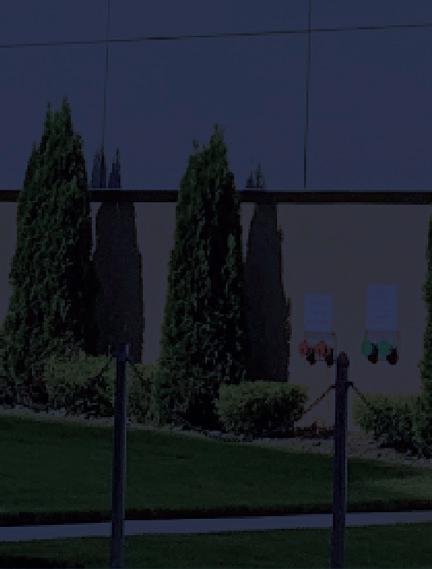























As pro-Hamas protests and anti-Jewish offenses continue to erupt on American campuses, Touro University is welcoming a record high number of students for the fall 2024 semester.
Touro’s Lander Colleges, devoted to observant Jewish communities, saw an average increase of more than 35% in overall enrollment of new students and a nearly 60% rise in transfer students.
Students who transferred from Ivy League schools, and from state universities in Florida, Maryland and New Jersey, reported high levels of discomfort being Jewish on secular campuses since Oct. 7. Many who seek careers in medicine, dentistry and the health sciences are turning to Touro University where they have the opportunity to continue their professional studies in an environment that respects their values.
One such student is 20-year-old Adam Commer of Livingston, NJ. After a gap year at Ashreinu in Israel, Commer enrolled as a freshman at Rutgers University where he planned to study biology in preparation for a career in dentistry.
Commer reports that things started to change early on last year.
“Right after Oct. 7, the Jewish students

started organizing vigils for Israel and at the same time, Palestinian students were protesting and bashing us,” he said. “We tried to talk peacefully but they were having none of it. They felt their ‘truth’ was the only point of view. When I came back to school after Pesach, I was greeted by an encampment and couldn’t get to my classes safely as they had blocked off the path. This was the last straw for me.”
With the support of his family, Commer said he decided to transfer to Touro’s Lander College of Arts & Sciences. Now a pre-dental student at Touro University, Commer is “thrilled to be able to be an observant Jew on campus” while pursuing his dream career.
He said Touro appealed to him because of the opportunity to continue on to professional school — the Touro College of Dental Medicine — “that offers state-of-the-art training in an environment that’s in sync with my values.”
Commer has hundreds of peers at the Lander Colleges who are on the path to medical and dental school and planning to continue in the Touro University system.
“We are proud to welcome all of our new students to Touro and offer a safe haven to Jewish students at this volatile time,” said Dr. Alan Kadish, Touro University President. “No one has to give up on their academic or professional aspirations because of the unrest on campuses.”
Kadish said Touro’s expanded offerings include seven medical schools, two dental school campuses, seven physician assistant programs, and top-rated programs in health sciences.
“Beyond health sciences, Touro’s accounting CPA program is one of the top in New York State and students can pursue any and all careers they choose at Touro — from prelaw and education to finance, technology, cybersecurity and more,” Kadish said.
Dr. Marian Stoltz-Loike, dean at Touro’s Lander College for Women, shared that “the significant increase in enrollment at Lander College for Women in Manhattan is part of the upward trend we have been seeing over the last few years, accelerated because of the fallout of Oct. 7th around the country.”
“For prospective and current students, Lander College for Women offers academic excellence and Torah values, which is what our students seek in an educational experience,” she said.
For more information on Touro’s Lander Colleges, visit touro.edu/landercolleges
By Dan Sommer and Jon Bridge
Nearly a year ago, in the wake of the Oct. 7 terrorist attacks in southern Israel, we watched in dismay as Jewish students at Cooper Union College in New York were forced to take shelter from an antisemitic mob in a campus library. This alarming incident underscored the perilous predicament Jewish students increasingly found themselves in all over college campuses in the United States.
Jewish organizations are mobilizing resources to ensure that our students’ voices are heard — through education, litigation, advocacy and one crucial element has long been overlooked —self-defense training as a vital tool for building confidence among Jewish students.
The spring semester marked a significant turning point with the launch of our new initiative, “Krav and Kesher” designed to empower Jewish students by offering complimentary Krav Maga training.

The program equips them with the skills to defend themselves and also fosters a deeper connection to their Jewish identity through meaningful peer discussions. Despite our varied backgrounds — one of us an entrepreneur in educational technology, and the other who was deeply embedded in campus life for AEPi, our nation’s largest Jewish fraternity — we both recognized a fundamental truth: Jewish students must be able to defend themselves to confidently and proudly embrace their identity on campus.
Quietly rolled out at six college campuses and training 85 students over multiple weeks, the results speak for themselves. A staggering 100% of surveyed participants felt more physically safe after completing the training. Additionally, 100% felt more confident in publicly identifying as Jewish.
The history of “Krav Maga” dates to the late 1930s when European Jewry had no choice but to be as equipped as possible to defend itself from riots and other precarious situations rooted in vehement antisemitic animus.
Across the country since the Oct. 7 massacre by Hamas against Israel, Jewish students have been harassed, intimidated, bullied, physically harmed and threatened. In Krav Maga training, we teach how to defend against a number of different scenarios in which a perpetrator is seeking to inflict harm. Basic training may have prevented injuries (and maybe something worse) in this troubling scenario.
We wish that our focus could be channeled elsewhere and that we didn’t have to live in a world where self-defense training is necessary, but the reality faced by Jewish students compelled us to act. We quickly learned that there was one organization that fully aligned with our vision of proud and confident Jews on campus, and which has, in fact, been working for more than a decade to create that mindset
in the community at large.
This is why we agreed to merge our Krav and Kesher program with the Community Security Service (CSS). A national 501(c)(3) nonprofit organization, CSS has trained thousands of community members in professionalgrade security techniques to help protect their own synagogues and community events. The data, along with anecdotes we hear firsthand, is why CSS decided to expand its mandate from synagogues and events to the college campus with a key component of its expansion being self-defense training.

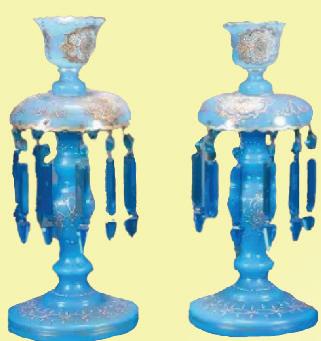








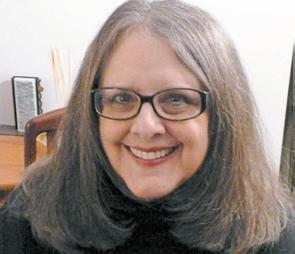
No matter how hard you work on your picture-perfect turkey or perfectly sliced brisket or elaborate rice dish, someone is bound to eventually ask, “What’s for dessert?” Everyone loves dessert and on Rosh Hashana, the sweetness that both begins and ends the festival feast seems to reinforce our hopes for a sweet year.
The custom of eating dessert after a meal goes back to the discovery of honey in pre-historic, caveman times. Ancient civilizations mixed honey with nuts and fruits and forever imprinted in our DNA our love of anything sweet. As humankind developed, their love for sweet tastes never ended, despite the disparate diets throughout the world.
Sugarcane, another sweetener, was domesticated about 10,000 years ago in New Guinea. Sugarcane became a common trade commodity throughout the world. In England, in the 1300s, sugarcane sold for the equivalent of about $50 per pound, something only the wealthy could afford. Still, whatever the cost, people began to use this and much less expensive honey in all kinds of foods.
People discovered that sugar, fat and flour, when mixed together and baked, created something absolutely delicious. Flavor that trio with spices like cinnamon and allspice, cloves and vanilla and all kinds of magical foods appeared. The world had gone far beyond the biblical honey to satisfy their sweet tooth.
However, when to eat these foods was the big question. They did not go well with savory dishes like game or poultry, so it soon became the custom to serve sweet treats at the end of the meal. This custom ended feasts on a positive note. It seemed everyone who ate something sweet was happy. Finally, the French named this final food, desservir, to clear the table, and the place of dessert at the end of the meal was solidified.
Ending a holiday meal with a lavish dessert may seem like overkill if the meal has been festive and elaborate, but how can you not end the holiday that begins a sweet year without a sweet treat? The key is to keep the dessert sweet but not overly filling. No heavy cakes with thick frosting and no molten chocolate cakes with warm runny insides — save those for another time. Make desserts that you can prepare a day ahead and that will not overstuff your guests, understanding that the delicious meal has filled everyone almost to the brim.
I always try to make something with apples to end the meal as it began, with apples and sweetness. To keep things lighter I make crumbles, rather than two-crust pies. And, of course we always have honey cake.
I hope you all have a sweet year and great desserts! Shanah Tova!
This is an excellent recipe that is light and fresh and brings summer forward into the cooler fall. Use the amount of fresh berries you like depending on whether you want a thin tart or a fuller (less neat when served) one.
PASTRY:
• 1-1/2 cups unbleached flour
• 6 Tbsp. pareve trans-fat-free margarine
• 2 Tbsp. solid vegetable shortening
• 1 Tbsp. plus 1 teaspoon sugar
• 1/2 tsp. salt
• 3 Tbsp. ice water
In a food processor bowl, combine flour, margarine, shortening, sugar, and salt. Pulse until the mixture is the consistency of coarse meal. Add ice water slowly through feed tube. Pulse until the dough just holds together. Usually less than 3 Tbsp. is enough. Remove dough from the bowl and knead on a well-floured surface for several seconds. Wrap in plastic wrap and refrigerate for about an hour.
NOTE: If you don’t have a food processor, you can mix this with a large fork or pastry blender or your hands. The results are the same and children love to help mix dough!
When chilled, place the dough onto a wellfloured surface. Let it rest for 15 minutes. Roll out to an 11 inch circle and transfer to the prepared tart dish. Roll the rolling pin across the top of the tart pan to cut off any excess dough. (I usually make a small blueberry hand pie with the remaining dough.)
Prick the bottom with a fork. Refrigerate for an hour. Place a parchment circle on the bottom of the tart crust and fill the center with pastry weights, dried beans, or rice to keep the bottom from rising. Place the crust in the lower third of the oven at 400 degrees. Bake for 10 to 15 minutes or until lightly browned. Carefully (the beans or rice get very hot) discard the paper and beans or rice and bake for another 3 to 5 minutes until the bottom gets lightly golden. Let cool. If this sounds too daunting, use the quick, pareve, deep dish, frozen crust method. Prick the bottom and line with parchment and weights. Prepare to bake as above.
GLAZE:
• 1/2 cup apricot, seedless raspberry, or peach preserves.
• 1 to 2 Tbsp. fruit liqueur like apricot, peach or raspberry OR
• 1 to 2 Tbsp. Orange or other fruit juice instead of liqueur.
Blend the jam in blender or food processor and pulse until smooth and thick. Add only as much liquid as needed to reach a thick, but flowing consistency. Apricot and peach jam usually need a little more liquid than the raspberry. Brush the glaze on the cooled tart shell and let sit for 2 minutes. Brush again and let sit for 10 minutes.
FILLING:
• 5 to 6 cups large fresh blueberries, more if berries are small, washed and dried thoroughly, divided.


When I wash and sort the berries, I save the best-looking ones for the filling (2 to 3 cups) and the rest go into the sauce. Place those best berries into the tart shell evenly. The berries should fill the shell to about a third of an inch from the top.
SAUCE:
• 3 cups blueberries
• 1/2 to 3/4 cup sugar (depends on tartness of berries)
• 1/4 cup fresh lemon juice
• 3 Tbsp. red currant jelly
• 1-1/2 tsp. cornstarch
Combine all the ingredients in a medium saucepan and bring to a boil over medium heat, stirring occasionally. Continue to cook, stirring constantly, for ten to fifteen minutes or until mixture thickens. It will coat the spoon when done. Let cool till just warm then refrigerate and chill, covered, until just cool. Don’t let it get cold or it will set.
Mix and spread the cooled sauce evenly over the berries. Chill the tart for several hours or overnight. Serve with non to dairy ice cream or fruit sorbet (like lemon or raspberry) or alone.
For a dairy meal, serve with vanilla ice cream or whipped cream. Serves 6 to 10.
My grandmother made apple cake in a square pan lined with waxed paper. She added walnuts and lots of cinnamon. I can’t remember the cake, but I can remember the delicious aroma as it baked. This is as close as I will ever get; it sends the aroma of cinnamon all through the house, and it is delicious warm from the oven, or cool. My kids love it with pareve vanilla ice cream.
• 7 to 9 large Cortland apples, peeled, cored and thinly sliced
• 2 cups plus 5 Tbsp. sugar
• 5 tsp. cinnamon (generous)
• 3 cups unbleached white flour
• Generous pinch salt but less than 1/3 tsp.
• 3 tsp. baking powder
• 1 cup Canola oil
• 4 extra-large eggs
• 1/4 cup orange juice
• 1 Tbsp. vanilla
• 3 Tbsp. sugar plus 1-1/2 tsp. cinnamon mixed together and divided. Grease and flour a tube pan. Set aside. Preheat the oven to 350 degrees. Peel and thinly slice the apples. Place them in a medium sized bowl, add 5 tablespoons of sugar and all the cinnamon. Toss gently to coat and set aside.
Combine the flour, sugar, baking powder and salt in a large bowl. Make a well in the middle and pour in the oil. Add the eggs, juice and vanilla and blend completely.
Sprinkle 2 tablespoons of the cinnamon and sugar over the bottom of the pan. Spoon one-third of the batter into the pan, making sure to cover the bottom completely. Spread half the apples over the batter and gently press them down. Spread another third of the batter over the apples. It’s OK if the batter is not completely spread evenly; it will fill in as the cake bakes. Repeat with the apples and end with the batter. Try to cover the apples completely on the top layer. Sprinkle with remaining cinnamon and sugar Bake for 80 to 90 minutes. Check at 50 to 60 minutes. The cake should be brown on top, but not too dark. A tester should come out with cinnamon, but no batter. If the cake is getting too dark but is not baked through, cover lightly with foil. When done, cool for at least 30 minutes before removing from the pan. Serves 8 to 12.
For the Crust:
• 1-1/2 cups unbleached flour
• 1/2 cup confectioners sugar
• 2 Tbsp. granulated sugar
• 1/2 tsp. salt
• 1/2 cup almond flour
• 1-1/2 sticks butter or trans-fat-free pareve margarine, well-chilled, cut into small pieces
For the Filling:
• 3/4 cup chopped walnuts, chopped to about the size of small peas
• 10 to 12 ounces fresh raspberries
• 2 extra-large eggs
• 3/4 cup sugar
• 1/4 cup flour
• 1/2 tsp. baking powder
• 1/2 tsp. salt
• 1 tsp. pure vanilla extract
• 1/4 tsp. pure almond extract
Place the ingredients for the crust in the bowl of a food processor and pulse until the dough comes together. If it is too crumbly, add a few drops of ice water.
Grease a 10 to 12-inch tart pan with a removable bottom and press the dough gently into the tart pan. Roll a rolling pin over the top to remove any excess dough. Cover lightly with plastic wrap and freeze for at least one hour.





































































By Kepherd Daniel, LI Herald
Mount Sinai South Nassau dedicated its new Sabbath House last week, honoring longtime supporters Iris and Shalom Maidenbaum.
The Sept. 12 event followed the facility’s recent relocation to larger quarters at 2500 Washington Ave., on the hospital’s Oceanside campus.
“The Jewish community, which makes use of the hospital to a great degree, needs to be close by on the Sabbath so they can stay in comfort while they’re dealing with so much stress with their loved ones who are in the hospital,” said Rabbi Yechezkel Freundlich of Congregation Beth Sholom in Lawrence.
“There’s a very strong Jewish community within the area and they have specific needs that are challenging if we don’t offer assistance to meet during the Sabbath,” explained hospital President Adhi Sharma. “Family visitation is an important part of the recovery and the healing of our patients, and we’re committed to that. And spirituality it is also an important part of many people’s recovery and healing. So this house allows us to address both.”
The Sabbath House addresses both religious obligations (like visiting the sick) and logistical needs (such as proximity to the hospital and kosher food).
“I feel very privileged to be part of this community-supported project,” said Shalom Maidenbaum, who contributed along with his wife, Iris, and law firm, Cedarhurst-based Maidenbaum Property Tax Reduction Group, to make the expanded facility possible. “It’s essential for the non-traveling-on-Sabbath community.”
It is the latest in a series of initiatives Mount Sinai South Nassau has undertaken to enhance patient and visitor care.

“I’ve lived here my entire life and while, thankfully, I’ve never had a loved one in the hospital for an extended period of time, I know that many in our community have,” said Amy Madmon, a partner in the Maidenbaum firm and a resident of the Five Towns. “To know there’s a safe haven for people who are going through such difficult moments — where they can rest and be surrounded by others in similar situations — is incredible.”
In addition to the Sabbath House, the Jewish Communities Program at MSSN includes a kosher pantry and respite room within the hospital that is operated in collaboration with the Achiezer Community Resource Center, helps schedule rabbinical visits, and facilitates access to all Shabbat hospitality, kosher food, and other ritual needs.
The kosher pantry and respite — accessible 24 hours a day, seven days a week, secured with a Hebrew lock — is stocked with books of Tehillim and chumashim, fresh prepared kosher foods and beverages, and such Shabbat and holiday necessities as battery-operated Shabbat candles and menorahs (in accordance with hospital safety).
“Both the Sabbath House and kosher pantry and respite room can be used as a resting place for family members and friends during a time
The Maidenbaums recently made a significant gift to Mount Sinai South Nassau to establish the Maidenbaum Health Care Heroes Plaza in honor of healthcare workers who bravely cared for thousands of critically ill patients during the COVID-19 pandemic. The gift supported the hospital’s ongoing effort to bring high-level specialty care to the South Shore so residents don’t have to travel to New York City or north for advanced treatment, a hospital spokesperson said.
of emergency, an extended stay for a patient, or for those who live a distance from the hospital,” said Rabbi Dr. Aaron Glatt, Chair of the Department of Medicine at Mount Sinai South Nassau and Associate Rabbi at the Young Israel of Woodmere.
To meet the dietary needs of patients and their families, the hospital’s Food and Nutrition Department offers a full kosher menu. The department serves glatt kosher meals on request for patients as well as their family members. Frozen kosher entrees are generally available for patients or family members arriving after hours.
Freshly prepared kosher food is also available for purchase in the hospital’s coffee and gift shop.
“Thankfully, I’ve never personally needed (the Sabbath House), but I feel for many who did, and it’s been a tremendous gift for the hospital and gift to our community,” said Rabbi Zalman Wolowik of Chabad of the Five Towns. “It’s our community hospital. It’s not even about Jewish or not Jewish — it’s a great community hospital that serves the community.”
The Sabbath House Committee is leading an effort to raise funds for the ongoing renovation and maintenance of the Sabbath House.

Continued from page 12
Preheat the oven to 350 degrees. Place the tart pan on a foil-lined rimmed cookie sheet. Bake until golden, 20 to 35 minutes. Remove from the oven, leave the oven on and let the crust cool for about 15 minutes.
For the tart:
Scatter the walnuts and raspberries evenly over the bottom of the crust.
Place the eggs, sugar, flour, salt and extracts in the bowl of an electric mixer and beat on low to fully incorporate all the ingredients. Do not overmix and scrape the bowl as needed. Pour the mixture evenly over the berries and nuts and spread to cover completely.
Place the cookie sheet in the center of the oven and bake until golden and set, 35 to 45 minutes. A tester should come out clean, but maybe red from the berries. Remove from the oven and let cool. Serves 6 to 8.
Bean Crumb Cake (Pareve or Dairy)
• 1/2 vanilla bean, split lengthwise
• 2 cups sugar (will be divided)
• 2 cups fresh cranberries
• 1/2 cup finely chopped walnuts
• 2 cups unbleached flour
• 2 tsp. baking powder
• 1/4 tsp. salt
• 1 stick trans-fat-free pareve margarine, softened or butter
• 2 extra-large eggs
• 1 tsp. pure vanilla extract
• 1/2 cup unsweetened almond milk or whole milk

Topping:
• 1/3 cup vanilla sugar (from above)
• 2 Tbsp. unbleached flour
• 2 Tbsp. softened butter or pareve, transfat-free margarine
Preheat the oven to 375 degrees and place a rack in the middle of the oven. Generously grease a 9-inch round spring-form pan. Line the bottom with parchment paper and grease the parchment. Scrape the seeds from the vanilla bean into a food processor. Add the sugar and pulse to combine. Scrape into a bowl and cover with plastic wrap.
Place the cranberries in the food processor and add 1/2 cup of the vanilla sugar. Pulse until finely chopped. Scrape into a bowl. Add the finely chopped walnuts, mix and set aside. In another bowl, whisk together the flour, baking powder, and salt.
Place the softened butter in the bowl of an electric mixer and add 1 cup of the remaining sugar. Beat on medium-high speed until light and fluffy. Add the eggs, 1 at a time, beating well after each addition and scraping the bowl as needed. Add the vanilla extract. Reduce the speed to low and add the flour and almond milk alternately, begin-

ning and ending with flour, until just combined. Spread half the batter in pan, spoon the cranberries over the batter leaving a half inch border around the berries and top with the remaining batter. Smooth the top.
Mix the remaining vanilla sugar with 2 tablespoons butter and 2 tablespoons flour. Mix until crumbly and sprinkle evenly over the cake. Bake until a tester inserted into cake comes out clean; the sides will begin to pull away from pan, about 45 to 55 minutes. Cool in pan for 30 minutes, remove the rim from the pan and cool completely. Serves 6 to 10.





















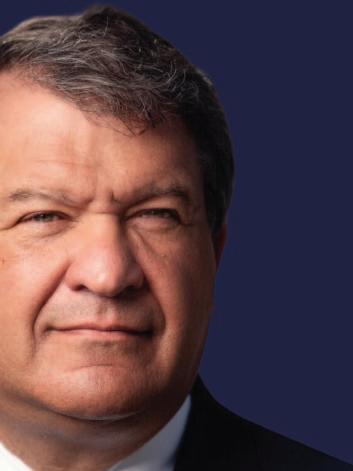




jewish star torah columnists:
•Rabbi Avi Billet of Anshei Chesed, Boynton Beach, FL, mohel and Five Towns native •Rabbi David Etengoff of Magen David Yeshivah, Brooklyn
•Rabbi Binny Freedman, rosh yeshiva of Orayta, Jerusalem
contributing writers:
•Rabbi Sir Jonathan Sacks zt”l,
former chief rabbi of United Hebrew Congregations of the British Commonwealth •Rabbi Dr. Tzvi Hersh
Weinreb, OU executive VP emeritus •Rabbi Raymond Apple, emeritus rabbi, Great Synagogue of Sydney •Rabbi Yossy Goldman, life rabbi emeritus, Sydenham Shul, Johannesburg and president of the South African Rabbinical Association.
contact our columnists at: Publisher@TheJewishStar.com
Five towns candlelighting: From the White Shul, Far Rockaway, NY
Fri Sept 20 / Elul 17
Ki Savo
Candles: 6:36 • Havdalah: 7:43
Fri Sept 27 / Elul 24
Nitzavim-Vayeilech
Candles: 6:24 • Havdalah: 7:31
Wed Oct 2 / Elul 29
Erev Rosh Hashana
Candles: 6:16
Thu Oct 3 / Tishrei 1
First Day Rosh Hashana (Tashlich)
Candles: 7:15
Fri Oct 4 / Tishrei 2
Second Day Rosh Hashana, Erev Shabbos Shaabos Shuva
Candles: 6:12 • Havdalah: 7:20
Fri Oct 11 / Tishrei 9
Erev Yom Yippur (Yizkor)
Candles: 6:01 • Havdalah: 7:09

Here’s an experiment. Walk around the great monuments of Washington. There, at the far end, is the figure of Abraham Lincoln, four times life-size. Around him on the walls of the memorial are the texts of two of the greatest speeches of history, the Gettysburg Address and Lincoln’s second Inaugural:
With malice toward none, with charity for all, with firmness in the right as G-d gives us to see the right…
A little way away is the Franklin Delano Roosevelt Memorial with its quotations from each period of the President’s life as leader, most famously:
The only thing we have to fear is fear itself. Keep walking along the Potomac and you come to the Jefferson Memorial, modelled on the Pantheon at Rome. There too you will find, around the dome and on the interior walls, quotations from the great man, most famously from the Declaration of Independence:
We hold these truths to be self-evident…
Now visit London. You will find many memorials and statues of great people. But you will find no quotations. The base of the statue will tell you who it represents, when they lived, and the position they occupied or the work they did, but no narrative, no quotation, no memorable phrases or defining words.
Take the statue of Winston Churchill in Parliament Square. Churchill was one of the greatest orators of all time. His wartime speeches and broadcasts are part of British history. But no words of his are inscribed on the monument, and the same applies to almost everyone else publicly memorialized.
It’s a striking difference. One society — the United States of America — tells a story on its monuments, a story woven out of the speeches of its greatest leaders. The other, England, does not. It builds memorials but it doesn’t tell a story. This is one of the deep differences be-
The mere act of telling the story, regularly, as a religious duty, sustained Jewish identity across the centuries, even in the absence of all the normal accompaniments of nationhood.
tween a covenant society and a tradition-based society.
In a tradition-based society like England, things are as they are because that is how they were. England, writes Roger Scruton, “was not a nation or a creed or a language or a state but a home. Things at home don’t need an explanation. They are there because they are there.”
Covenant societies are different. They don’t worship tradition for tradition’s sake. They do not value the past because it’s old. They remember the past because it was events in the past that led to the collective determination that moved people to create the society in the first place. The Pilgrim Fathers of America were fleeing religious persecution in search of religious freedom. Their society was born in an act of moral commitment, handed on to successive generations.
Covenant societies exist not because they have been there a long time, nor because of some act of conquest, nor for the sake of some economic or military advantage. They exist to honor a pledge, a moral bond, an ethical undertaking. That is why telling the story is essential to a covenant society. It reminds all citizens of why they are there.
The classic example of telling the story occurs in this week’s parsha, Ki Savo, in the context of bringing first-fruits to Jerusalem:
The Priest shall take the basket from your hands and set it down in front of the altar of the L-rd your G-d. Then you shall declare before the L-rd your G-d: “My father was a wandering Aramean, and he went down into Egypt with a few people and lived there and became a great nation, powerful and numerous. … So the L-rd brought us out of Egypt with a mighty hand and an outstretched arm, with great terror and with signs and wonders. He brought us to this place and gave us this land, a land flowing with milk and honey; and now I bring the first-fruits of the soil that You, L-rd, have given me.” (Deut. 26:410)
We all know the passage. Instead of saying it on Shavuot when bringing first-fruits, we now say it on Pesach as the central part of the Haggadah. What remains remarkable is that, even in biblical times, every member of the nation was expected to know the story of the nation, and recite it annually, and make it part of his or her personal memory and identity — “My father … so the L-rd brought us out.”
A covenant is more than a myth of origin — like the Roman story of Romulus and Remus, or the English story of King Arthur and his knights. Unlike a myth, which merely claims to say what happened, a covenant always contains a specific set of undertakings that bind its citizens in the present and into the future. Here for example is Lyndon Baines Johnson talking about the American covenant: They came here the exile and the stranger… They made a covenant with this land. Con-

ceived in justice, written in liberty, bound in union, it was meant one day to inspire the hopes of all mankind; and it binds us still. If we keep its terms, we shall flourish.
Covenant societies — of which the USA is the supreme contemporary example — are moral societies, meaning not that their members are more righteous than others but that they see themselves as publicly accountable to certain moral standards that are part of the text and texture of their national identity. They are honoring the obligations imposed upon them by the founders.
Indeed, as the Johnson quotation makes clear, covenant societies see their very fate as tied up with the way they meet or fail to meet those obligations. “If we keep its terms, we shall flourish” — implying that if we don’t, we won’t. This is a way of thinking the West owes entirely to the book of Devarim, most famously in the second paragraph of the Shema: If you faithfully obey the commands I am giving you today … then I will send rain on your land in its season. … I will provide grass in the fields for your cattle, and you will eat and be satisfied.
Be careful, lest you are enticed to turn away and worship other G-ds and bow down to them. Then the L-rd’s anger will burn against you, and He will shut up the heavens so that it will not rain and the ground will yield no produce, and you will soon perish from the good land the L-rd is
giving you. (Deut. 11:13-17)
Covenant societies are not ethnic nations bound by common racial origin. They make room for outsiders — immigrants, asylum seekers, resident aliens — who become part of the society by taking its story and making it their own, as Ruth did in the biblical book that bears her name (“Your people will be my people, and your G-d, my G-d”) or as successive waves of immigrants did when they came to the United States. Indeed conversion in Judaism is best understood not on the model of conversion to another religion such as Christianity or Islam — but as the acquisition of citizenship in a nation like the USA.
It is utterly astonishing that the mere act of telling the story, regularly, as a religious duty, sustained Jewish identity across the centuries, even in the absence of all the normal accompaniments of nationhood — land, geographical proximity, independence, self-determination and never allowed the people to forget its ideals, its aspirations, its collective project of building a society that would be the opposite of Egypt, a place of freedom and justice and human dignity, in which no human being is sovereign; in which G-d alone is King.
One of the most profound truths about the politics of covenant — the message of the firstfruits’ declaration in this week’s parsha — is: If you want to sustain freedom, never stop telling the story.

Teaching in the old city of Jerusalem, one develops a certain awareness of the different types of people who can wander in off the street. Many of the people who frequent the old alleyways and ancient stones of Jerusalem are incredible people with incredible stories, but sometimes you get real characters walking through your door.
We once had a fellow wander in who was absolutely convinced that he was King David. (In fact, there is a medical term for a specific mental disorder that affects people who may visit Jerusalem and have too intense a spiritual experience, resulting in the conviction that they are prophets or the like — Jerusalem Syndrome.)
One day, a few minutes after my class had be-
gun, the fellow sat down in the last remaining seat, right next to mine. Something about him seemed a bit “off,” so I kept my eye on him, obviously not wanting to react in any way that might embarrass him, yet aware of a responsibility to the rest of the participants in the program and their right to remain focused on the study they were pursuing.
I soon noticed he was staring at my coffee mug, bringing his face really close to it, with what seemed like a mad look in his eye. Not wanting to break the flow of the class, I stood up as I spoke gradually moved towards the other side of the room, figuring this way people wouldn’t notice him.
Then he did a really odd thing: he picked up my mug, half full of coffee, continuing to stare at it. Now that’s just not normal; and then he placed his lips over the edge of my mug and took a sip of the coffee!
By this time, of course, no one was paying attention to my lecture, so there was nothing left but to make light of it: “Enjoy!” I said, “and feel free to help yourself to more coffee in the back!”
Everyone laughed, and this fellow’s pleased look changed to one of embarrassment, as he seemed to come out of his reverie.
“You don’t understand,” he said, “I just wanted to see if this was a coffee mug. You see, I’ve never seen one before.”
“Don’t get me wrong, I’m not an idiot, I know what a coffee mug is,” he continued, “but I was born blind, and three days ago, they did experimental laser surgery on my left eye, and now I can see. So I decided to take some time to ‘see’ all the things I have seen, but never really seen!
“I was looking at this, and realized this must be what a coffee mug looks like, and just wanted to see if I was right.”
Can you imagine? Here I am thinking this fellow had completely lost it, but in truth, he was the sanest person in the room, because for that moment, he was in the process of appreciating the gift of sight.
We are not really capable of being in a constant state of appreciation for all the gifts we have in this world. In fact, if we really did succeed in maintaining that level of awe and joy, probably no one else would be able to talk to us.
In truth, that may well be the theme of this week’s portion, Ki Savo, which begins with a rather strange ceremony, proscribed to all of us as a ritual, which occurs once a year, beginning on the festival of Shavuot.
Once a year, every Jew was meant to come to the Temple in Jerusalem with the first fruits of harvest in a basket for the Temple. And you shall come to the priest [Kohen] who will be in those days. … And the priest shall take the basket from your hands, and place it before the altar of G-d, your G-d. … And you shall rejoice in all the good Hashem your G-d has given you. (Devarim 26:1-11)
The Torah appears to be introducing a commandment to rejoice in all the good we have been given. But how can we be commanded to rejoice? Further, this verse itself is part of what is certainly one of the most painful and challenging chapters in the entire Torah.
This week, we will read what has come to be known as the chapter of Tochachah, or Curses, which delineate what will happen to the Jewish people when they do not hearken unto the word of G-d, abandoning the ethical recipe for a better world laid out in the Torah. And for 54 verses in the 28th chapter of Devarim, G-d tells us what will happen to us, in all of its unfolding horror.
These verses are so painful that our custom is to read them in a lower voice, almost as if the Torah reader is expressing the pain of the congregation at the implication of this reading.
The Torah here speaks of exile and destruction, full of pain and suffering. But there is one verse in the midst of all of this pain and destruction
See Freedman on page 22
DR. tzvi heRsh weinReb Orthodox Union

It is a question that I learned never to ask. I first learned this lesson in my training as a psychotherapist, long ago. I was seeing a gentleman for a number of problems, including his marital difficulties.
Despite the passage of the years, I still vividly remember the evening in which he came to my office extremely distraught. He couldn’t contain his torment, even for a moment. Before he sat down opposite me, he blurted out, “She is cheating on me!”
He had discovered incontrovertible evidence of his wife’s infidelity. He continued to disclose the fact that bits and pieces of the evidence were available to him for more than a year. Letters, phone messages, unexplained absences, and unusual expenditures from their joint checking account had accumulated and he had been aware of all of them. Yet it was not until that morning that he actually saw what was in front of his eyes all the time.
I was a fledgling psychotherapist back then, and I could not suppress exclaiming the question, “Didn’t you see it coming? Didn’t you notice what was in front of your eyes?” I was not prepared for his tearful but angry response.
“Of course I saw it coming, you dummy!” He was furious with me for my total lack of empathy. He clearly saw it coming, but he did not want to see it. One does not see what one does not want to see, no matter how blatant and obvious the facts are.
The lesson I learned from this interchange was not limited to the field of marital counseling. It is a lesson that I have tried to remember throughout my personal, professional and religious life from that time forward. I learned that all the evidence in the world will not convince someone who prefers to be blind to that evidence.
In truth, I should have learned this lesson long before I embarked upon a career in psychology. I should have learned it when I first studied this week’s Torah portion, Ki Savo (Deut. 26:129:8), which includes the following passage:
Moses summoned all Israel and said to them, “You have seen all that the L-rd did before your very eyes in the land of Egypt. … The wondrous feats that you saw with your own eyes, those pro-
One does not
what one does not want to see.
digious signs and marvels. Yet to this day the L-rd has not given you a mind to understand or eyes to see or ears to hear.” (Deut. 29:1-3)
To paraphrase: “You saw, but you did not see. You heard, but you did not hear. All that you needed to know was before you, but did not have the mind to understand.”
About the same time that I sat face to face with the betrayed husband who struggled so hard not to see what should have been apparent to him, I was introduced to the writings of a great rabbi in Israel, who died tragically very young, almost 50 years ago. His name was Rabbi Elimelech Bar-Shaul, and a posthumously published collection of his writings on the Torah portions of the week was issued shortly after his death.
The name of this collection is “Min HaBe’er”
(From the Well), which is an apt title for a book full of insights drawn from the deepest sources of our faith. Rabbi Bar-Shaul reflects upon these verses and upon the phenomenon of
blindness and deafness to the sights and sounds which are prominent in our surroundings. Let me translate some of his reflections for you.
There is a magnificent teaching here in these verses for all generations and all situations. A person can see wondrous things, true revelations, and yet, paradoxically, not see them. … The Almighty, blessed be he, gives the person eyes to see and ears to hear and a heart to understand, but it is the person who must choose to see and hear and understand. It is the person who must open his eyes well to see, and even then he cannot see unless he also opens his heart to understand. For if a person just sees with his eyes alone, he may react emotionally. But as long he does not direct his mind to what he has seen, his emotional reactions will fall short of understanding, of knowing. …
It is not for us to have critical thoughts about our ancestors who failed to see. But the Torah here is giving us both a guideline and a warning signal. When Moses tells the people of Israel, ‘You have seen …. but you were not given a mind to understand or eyes to see or ears to hear,’ he is calling upon us, today, to think deeply and well about these words and to apply them to our own circumstances. So many times in our history we have failed
See Weinreb on page 22

Nechama Leibowitz was fond of teaching her students to find the milah mancha, a shoresh (root noun or verb), word or phrase that appears numerous times in a given section.
In Parshat Ki Savo, a surprising milah mancha is the root of the word simcha, meaning joy. While the word only appears in three contexts, each instance brings its own set of valuable lessons. The first reference to joy comes in the context of bringing the first fruits. After placing the basket on the floor of the Mishkan, having said one’s declaration of gratitude, the Torah says, “You
will rejoice in all the bounty that G-d has given you, along with the Levite and the ger who lives amongst you” (26:11). The joy here comes from a recognition that the gifts we enjoy come from G-d.
The second mention of joy alerts the people of a time, in the hopefully not-too-distant future, when they will gather at Mount Eyval after having crossed into the land of Canaan. Moshe instructs them as to how they will construct a mizbeach (altar) out of uncut stones and bring sacrifices upon it. “You will bring peace offerings there and you will rejoice before your G-d” (27:7), with joy coming from a feeling of closeness to G-d because we are in the land He promised and we are seeing the circle of the Redemption from Egypt coming to a close.
The third time we see the word simcha is in the Tokhacha (Rebuke), when the people are told of all the curses that will come upon you “because you did not serve the L-rd your G-d with
joy and a merry heart on account of having plenty of everything” (28:47). It seems the Torah is suggesting that, for some people, money can buy happiness. But the idea that the money causes people to forget G-d, and consequently not to serve G-d with joy, is one of the ingredients that will bring about the curses of the Rebuke.
Living life with joy, and rejoicing with G-d, seems to be an easy antidote to life’s ills and pitfalls
Those who follow the teaching of Rabbi Nachman of Breslov that “it is a great mitzvah to be happy,” have a built-in reminder that, as much as everything weighs on the shoulders, there is a higher calling. We can look at all the blessings we have and be reminded that life is good.
The Torah explains why the curses of the Tokhacha would be visited upon the Jewish people, and it tacks on the message of not serving G-d with joy. We need to find joy in everything
we do.
The celebration at Mt. Eyval, which is recounted in Yehoshua Chapter 8, was a reminder that G-d fulfills His promises — even though the fulfillment of the promises sometimes comes to a different generation. There is merit to serving G-d, to fostering the man-G-d relationship and rejoicing in the gift of being from G-d’s People. We build the relationship through our time commitments, our monetary commitments, and through our life choices. We pray, we learn, we act, we serve, we fulfill commandments, and many are committed to growing in observance, in learning, and in each person’s closer feelings for G-d.
If we smile more and rejoice more in our service and dedication to G-d, who knows what can happen? Maybe the Messiah will come. And maybe we’ll become a light unto others as we are “motzim chen b’einei Elokim v’adam” (finding favor in the eyes of G-d and Mankind).
Published weekly except during certain religious and civil holidays by The
Star LLC New York City office: 5676 Riverdale Ave Suite 311, Bronx NY 10471 • LI office: 2
how to reach The Jewish Star — Write: Editor@TheJewishStar.com.
Editor & Publisher: Ed Weintrob
516-622-7461 ext 291
Jewish Star Associate: Nechama Bluth, 516-622-7461 ext 241.
Content: The Publisher endeavors to ensure that our content is within the bounds of normative halachah and hashkafah. Anyone who feels anything we publish may be inappropriate in this regard is urged to bring the item in question to the attention of the Publisher. Advertising is accepted at the sole discretion of the Publisher and should conform to standards appropriate for distribution in an Orthodox community.
Send us your news! Editor@TheJewishStar.com
Advertising: Publisher@TheJewishStar.com
Kashrut: The Jewish Star is not responsible for the kashrut of any product or establishment featured in its pages. If you have questions regarding any establishment or product, including its supervision, please consult your rabbi for guidance.
Submissions: All submissions become the property of The Jewish Star and may be edited and used by the Publisher, its licensees and affiliates, in print, on the web and/or in any media that now exists or will exist in the future in any form, including derivative works, throughout the world in perpetuity, without additional
authorization or compensation. The individual or entity submitting material affirms that it holds the copyright or otherwise has the right to authorize its use in accordance with The Jewish Star’s terms for
Opinions:
Distribution: The Jewish Star is available free in kosher food establishments, stores, synagogues, and curb-side newsboxes on Long Island, in New York
TThe
This
of Torah; please dispose of properly.

wenty-three years ago, on the sunny morning of Sept. 11, 2001, close to 3,000 people were murdered on American soil by 19 terrorists.
I knew two of the victims. One was working in the World Trade Center. The other was a passenger on the hijacked jet that struck the Pentagon.
That was one reason why my life, like the
‘Ceasefires’ and ‘negotiated settlements’ are not how tyrants and terrorists are deterred, much less defeated.
lives of so many other Americans, was transformed on that terrible day.
Another reason: In early 1979, I spent several months reporting on the revolution in Iran. I arrived just after the Ayatollah Ruhollah Khomeini had returned from exile in France. Within weeks, a revolutionary council guided by his theology took power.
Books and music regarded as “anti-Islamic” were banned. Women were forced to conceal their bodies under chadors. Lashing, stoning, and summary executions were among the punishments meted out to those whose beliefs, sexual orientation, or conduct were disapproved of by the Ayatollah. In Iranian mosques, chants of “Death to America!” and “Death to Israel!” echoed.
What I was witnessing — though I didn’t fully understand it at the time — was the birth of the first modern nation-state committed to Islamic imperialism and jihad: religious war against the Judeo-Christian West.
The founding of the Islamic Republic of Iran by Persian Shiites both humiliated and galvanized a cohort within the Sunni Arab world. They asked themselves: Who within our tribe is committed to the re-establishment of the caliphate and to defeating the Americans?
From that seed, did al Qaeda sprout.
In the weeks after 9/11, I sat down with Jack Kemp, a Republican politician who had been close to President Reagan, and Jeane Kirkpatrick, a political scientist and self-described “AFL-CIO Democrat” who President Reagan appointed his ambassador to the UN. Also in these discussions: a visionary philanthropist to whom they introduced me.
We began organizing a think tank which we named the Foundation for the Defense of Democracies (FDD). It was our conviction that, following the collapse of the Soviet Union, the US had taken a “premature peace dividend” and “a holiday from history.”
We correctly foresaw that this would be a long war. We incorrectly believed that, after 9/11, no one in a position of authority would defend terrorists.
Before long, there were prominent journalists and academics asserting that “one man’s terrorist is another man’s freedom fighter.”
That led, ineluctably, to what we now see: Herds of ignorant students, tenured activists, and professional agitators trampling over American campuses in solidarity with murderers, rapists, and baby killers who, at this very moment, are torturing hostages.


In his press briefing on Friday, US State Department spokesman Matthew Miller was asked about how the US is responding to the dire situation for women in the Islamic Republic. The journalist prefaced her question by mentioning the second anniversary of the Sept. 16, 2022 murder of Mahsa Amini.
Amini was a 22-year-old woman from Saqez in Iran’s Kurdistan Province. While on a trip with her family to Tehran, she was arrested by the regime’s “morality police” for not having her head covered properly. According to eyewitnesses, she was beaten as soon as she entered the van that was transporting her to the station for “education” — mullah-style. Three days later, she was dead. One can only imagine the kind of torture she endured before she was taken to the Kasra Hospital in northern Tehran. Photos that emerged of her lying in a coma matched the medical center’s
statement that when she was admitted on Sept. 13, she showed “no vital signs.”
This notice was removed from the hospital’s social-media pages after hardliners called its staff “anti-regime agents.” In parallel, police denied having beaten Amini to death, insisting that she had passed away from a heart attack. It was a lie, of course, and everybody knew it.
Miller responded that Amini “inspired a historic movement that has impacted Iran and influenced people across the globe who are advocating for gender equality, respect for human rights, and particularly, the respect for human rights inside Iran.”
The journalist referred to a new report by a United Nations fact-finding mission on the increase in suppression of women’s and girls’ rights in Iran, and Miller acknowledged that the UN report “is absolutely right. We continue to see a crackdown on women and women’s rights in Iran.”
However, he added, “I would just say the new president of Iran has at various times signaled that he wants to change his approach, and wants to reach out to the West and have a different relationship with the West. There are obviously a number of actions he could take in that regard
See Blum on page 22


Keen-eyed readers of this column will know that I am fond of occasionally quoting Karl Marx’s observation that history repeats itself, “the first time as tragedy, the second time as farce.” In those lines originally published in 1852, Marx was referring to the coup in France the previous year carried out by Louis Napoleon, nephew of the far better-known Napoleon Bonaparte. But since then, his aphorism has been applied in many contexts where current events echo the past.
Looking at recent developments in Afghanistan, I was again reminded of Marx’s quote.
When the Taliban first seized power in that shattered country in 1996, that was undoubtedly a tragedy; first for the Afghan people, yet again denied the opportunity to nurture a democratic polity, and later for the United States and the rest of the world. The terrorist atrocities of Sept. 11, 2001, in the United States — the 23rd anniversary of which was solemnly marked last week — were incubated in Afghanistan after the Taliban provided Osama bin Laden and Al-Qaeda with a haven there.
That terrible atrocity right at the turn of the millennium turned history on a different course, setting up an epic battle between Western liberal
democracy, with its emphasis on pluralism and individual rights, and an Islamist form of totalitarianism that sought to crush anything and everything in its path it deemed to be a deviation from its vision.
Wars duly followed, in Afghanistan and then Iraq, and existing and new threats, especially from the Islamic Republic of Iran, deepened at just the time that Western publics grew tired of foreign interventions and foreign wars, setting the stage for a revival of both leftwing anti-imperialism and right-wing isolationism.
Finally, in 2021, amid the disastrous American withdrawal from Afghanistan, the Taliban returned to power, in a heartbreaking confirmation that the previous 20 years had been a colossal waste of blood and money.
That, too, was a tragedy — and yet, there are elements of farce here that suggest, at least to my mind, that history can repeat itself as both tragedy and farce simultaneously.
As the 20th century gave way to the 21st, only a few regional specialists and policy wonks grasped the grave threat posed by the Taliban. The rest of us were shaken from our slumber when those passenger planes careened into the World Trade Center, the Pentagon and a field in Pennsylvania. Twenty years later, with a new generation coming of age, we stopped caring and just wanted out.
All that was and is a tragedy, and the restoration of the Taliban is the most tragic aspect of all. But where is the farce?

That can be summarized in one word: Gaza.
For all the incompetence and corruption of their leaders, the Palestinians have long been adept at exploiting guilt over colonialism and the long tradition of antisemitism in Western countries, even as large numbers of them thumb their noses at the values our civilizations represent, from the immediate aftermath of the 9/11 massacre, when many danced in the streets and handed out candy in celebration, to the pogrom of Oct. 7 last year, when Hamas and allied terrorist groups murdered, raped and kidnapped their way through southern Israel.
The result? As pro-Israel advocates on social media constantly point out, seemingly to no avail, our streets are empty of protesters when blood is shed in Ukraine or Sudan or, indeed, Afghanistan, but as soon as an Israel Defense Forces missile strikes a Hamas command center in Gaza City or
Rafah, they pour out like rats from a sewer. Therein lies the farce.
This is why the pro-Hamas movement has to be understood as being about far more than Israelis and Palestinians. The fixation with Palestine is one major reason why Western publics remain largely indifferent to, and even contemptuous of, the suffering of non-Palestinians. And perhaps no current situation illustrates that point better than Afghanistan.
Three weeks before this year’s Sept. 11 commemorations, the Taliban introduced its “Law on the Propagation of Virtue and Prevention of Vice.” Its primary targets are women, who are forbidden from going to work or to school; who can only use public transport when accompanied by a male chaperone; and who must fully cover their faces and bodies when in public.

With the new school year upon us, this is a message for pro-Israel students on campus: You are the real “Students for Justice in Palestine.”
Students for Justice in Palestine (SJP) is the preeminent anti-Israel group on American college campuses. It was they who primarily ran the infamous encampments in the spring. SJP is a harmful organization, but you have to hand it to them, they do at least have a good name. Unfortunately, that self-appointed title as the defender of justice is wholly inaccurate.
It has long been argued that the Holy Roman Empire was neither holy nor Roman, and was not even an empire. It might similarly be said that SPJ in Palestine is neither student-driven nor seeking justice; it’s also not concerned with the residents of the region that some call Palestine. By contrast, pro-Israel students check all of those boxes.
Let’s examine the words, one by one.
Let us take the word students, which these activists claim to be.
While the activists involved in the pro-Israel campus movement are students, many of the activists involved in SJP are not students at all.
Rather, they are shady, quasi-professional agitators. Impervious to university sanction or discipline with no homework to complete and no exams to cram for, the non-student ranks of SJP can dedicate themselves, full-bore, to sewing discord and unrest while brazenly violating university policies without fear of reprimand.
These off-campus agitators borrow upon the legacy of pure student activism, as they cynically invoke the legacy of campus protest movements to advance their extreme, inorganic agenda. Pro-Israel campus clubs are entirely composed of enrolled students and reflect the feelings of a distinct, organic stakeholder group among the broader student body.
While SJP claims the mantle of the defenders and seekers of justice, pro-Israel students seek genuine justice.
What does “justice” look like in the context of SJP? Given the group’s longstanding and well-documented history of supporting, excusing and condoning Hamas terrorism, we can surmise that wanton murder and kidnapping is part of the “justice” SJP claims to promote.
We can also gather that for SJP, “justice” means the wholesale destruction of Israel. Indeed, its chapters routinely refuse dialogue even with local Jewish groups on campus. Their refusal to “normalize” relations with their peers and classmates evidences their utter eliminationism when it comes to the State of Israel itself.
What about “justice” for Palestinians? Well, SJP has consistently failed to criticize Hamas’s murder of Palestinian political opponents, its open oppression of Palestinian women and the group’s tendency to throw Palestinians convicted of religious offenses off of tall buildings. We may conclude all this, too, fits within the perverse SJP conception of “justice.”
By way of comparison, pro-Israel campus

clubs invariably support dignity and self-determination for both Israelis and Palestinians, while celebrating diversity, empowered women, religious pluralism and thriving minority communities within Israel.
Let’s consider the elephant in the room: the use of the word “Palestine” in SJP’s name. This may throw off some pro-Israel readers. In some pro-Israel circles, “Palestine” is not preferred. Palestinian solidarity advocates, for their part, refuse to say “Israel” or “Israeli” at all — instead referring to the state as “the Zionist entity” and to its citizens simply as “colonizers.”
Yes, Palestine was a retronym applied to Judea by the Romans.
•Yes, Palestine invokes the ancient and longextinct Philistines (to whom present-day Palestinians bear no connection).
•Yes, Israel is a state that must be recognized and deserves to be called by its chosen name. But like it or not, old place names die hard. Mumbai and Bombay. Myanmar and Burma. Istanbul and Constantinople (there’s a song or two about that one). Many well-meaning, reasonable, intelligent people call the region, the whole region, comprising Israel and the Palestinian areas, Palestine. For a long while, so did the early Zionists. Palestine is often used as a primarily geographic, not political, descriptor.
caroline glick
Israel Hayom

Sept. 13, 1993 was the day Israel’s ruling class abandoned Zionism. That day, then prime minister Yitzhak Rabin stood in the White House Rose Garden and officially recognized the Palestine Liberation Organization — to the rapturous applause of his supporters back home.
The PLO was many things.
•It was a terrorist organization, the architect of modern terrorism — including airline hijacking, kidnapping, the murder of families, the mass murder of children, the assassination of diplomats.
•It trained everyone from Khomeini’s Islamic Revolutionary Guard Corps to the Japanese Red Army, the Baader Meinhof Gang and the Black Panthers. It brought terrorists from every ideological line together and forged them into a revolutionary conglomerate united in their desire to destroy the United States, the West, the Jews and their state, Israel.
•It was a political warfare group. It brought genocidal Jew hatred to the West’s radical left. It used the media to romanticize barbarous acts of mass murder and brutal torture as it carried them out.
Through its Western lackies, barely 20 years after the Holocaust the PLO was able to reinstate Jew hatred as a tool for political mobilization and a major cultural force.
Through its propaganda operations, the PLO convinced ignorant young people with guilty consciences that their Nazi parents were really victims. Zionism was demonized as a new Nazism — worse than the first one. And in 1975, 30 years after the liberation of Auschwitz, the UN General Assembly passed Resolution 3374, which designated Zionism a form of racism.
Zionism is often defined as the Jewish national liberation movement. And that is true enough, but that definition obfuscates more than it reveals. Zionism is simply Judaism.
Judaism has three foundations — the Torah, the nation of Israel and the land of Israel. There have been centuries of campaigns to forcibly convert the Jews to other faiths, replete with mass burnings of sacred books aimed at wiping out the Torah and annihilating Jews by physically destroying their sacred texts and spiritually capturing them through forced renunciation of their faith.
Campaigns to annihilate the Jewish people — whether through genocide, mass expulsions, the Napoleonic code or Communist dictates that required Jews to renounce their national attachment to one another — aimed at disappearing the Jews by either physically destroying them or forcing them to reject the relevance of their own identity.
Zionism predated both the Torah and the people of Israel. Judaism began the moment that G-d told Abraham to leave the land of his fathers and move to the land of Israel where he would become a nation, organized around the laws G-d prescribed.
The Jewish nation was born in the land of Israel. And the faith of Israel was born there. Neither the law nor the people make sense without the land of Israel.
Zionism is often defined as the Jewish national liberation movement. But it’s more than that. Zionism is simply Judaism.

And that’s the thing — each of the three foundations of the Jews are inextricably linked to the others.
The PLO had three founders — Yasser Arafat, Egyptian president Gamal Abdel Nasser, and the KGB.
For Arafat, the PLO was a means to inherit the mantle of the founder of Palestinian nationalism, Nazi agent Haj Amin el Husseini. Husseini spearheaded the modern jihad against the Jews and the British throughout the Arab world. And he used antisemitism as a means to persuade the British and others to support his efforts against the Jews even as he directed his followers to wage war against Britain.
With the help of his Soviet sponsors, Arafat carried out a similar political operation among Western radicals. And like Husseini, Arafat also sought to solidify pan-Arab support for the annihilation of Israel over the long term.
The PLO served Nasser’s purpose in two ways. When he founded the terror group in 1964, Nasser envisioned that the terror group would reinforce his position as the undisputed head of the Arab world. After his stunning defeat in the Six-Day War three years later, he viewed the PLO as a proxy force that would serve as the avant-garde of the pan-Arab war to annihilate Israel and keep it in the headlines while the Arabs rebuilt their forces and organized for a new round of war.
For the Soviets, the PLO was a means to undermine the US-led West’s sense of the morality. The Jewish state was the paradigmatic foundation of the Western nation state. The US founding fathers aspired to build a new Jerusalem in the New World, based on G-d’s law and a belief in man’s inherent fallibility.
The PLO, which asserted that Israel was a racist, colonialist outpost, was a tool to delegitimize Israel and through it the United States and the Western world. If Israel was born in sin, then the Bible was a lie and the United States itself had been founded on immoral belief in nothing more than racist, European supremacism.
As far as Israel was concerned, the PLO’s dual terrorism and political warfare operations were geared toward Balkanizing Israeli society. PLO surrogates and sympathizers assiduously courted first leftist American Jews and then leftist Israeli activists to peel them away from the vast majority of American Jews and Israelis who recognized the insidiousness
of the PLO’s political actions and the pure evil of its terrorism. The idea was to convince them that “peace” would reign if Israel would simply accept the legitimacy of the PLO. These activists in turn began campaigns in the American Jewish community, and within Israel, to demonize Israelis who rejected the PLO as atavistic warmongers. Over time, their efforts paid off. As the Israeli right rose to power for the first time in 1977 with the support of religious and working class, overwhelmingly Sephardic Israelis, legitimizing the PLO increasingly became the means to unify the left into a cohesive opposition and social class.
The problem with the politics of hate is that hate is a hard habit to break.
Given the nature, goal and modus operandi of the PLO, at its foundation, accepting the legitimacy of the PLO meant rejecting the legitimacy of Zionism, or of the state of the Jews. For Israelis and Jews in the Diaspora, that translated into social and political activism geared toward legitimizing hatred of the Israeli communities whose members refused to attenuate their attachment to Judaism. This was the case whether that attachment was to the traditional Judaism of the Sephardic Jews, the ultra-Orthodoxy of the haredim or the attachment to the land of Israel, particularly Judea and Samaria, of the national religious community in Israel.
Rabin’s decision to accept the legitimacy of the PLO at the White House on Sept. 13, 1993 transformed this hateful, anti-Jewish approach to the people of Israel and their national identity into the national strategy of the Israeli government.
In the event, it failed completely. It failed completely for two reasons.
•First, the PLO’s goal was never peace. It was always the annihilation of Israel — all of Israel. So it could never be a true partner to any Israeli, no matter how far to the left, who wasn’t convinced that Israel should disappear completely. And even those had a problem.
Because it turned out that the PLO was just a gateway drug to Hamas, which wouldn’t even pay lip service to the distinction between postZionist and Zionist Jews.
•The second reason it failed is because the narrative of Israeli criminality and immorality was never true, and most Israelis never bought it. Most Israelis also never accepted the distinction between “good” and “bad” Jews. They never agreed that there was something morally depraved about Zionism, or the Torah or the people of Israel. No matter how hard the left tried, it could never get a majority of Israelis to agree with the fundamental principle that guided its policies and actions.
Sure, Israelis want peace. But they don’t think they are the reason peace has eluded the Jewish state and people. They refuse to blame themselves for the aggression and hatred directed against their people and country.
The problem with politics of hate is that hate is a hard habit to break. If you have been conditioned to believe that your future is dependent on defeating the object of your hate, the only way your opinion is likely to change is if you stop hating.
Since 1993, the PLO proved over and over that it is Israel’s enemy, not its peace partner. But accepting the truth meant accepting that the left had brought disaster on the country, and the objects of its hatred — the Jews who refused to renounce any aspect of their identity — had been right all along.
In other words, accepting failure required them to either redefine their class identity or abandon it. The left opted to reinvent itself. It embraced the concept of “Start-Up Nation” as a way to secure its economic and cultural power while maintaining its detachment from the rest of society. By seizing control over the new elixir of high-tech, the left joined the global elite, with its capitals in Davos and Silicon Valley. But you have to pay to enter the realm of the new globalist elite. The overlords aspire to a post-nationalist, internationalist form of governance. Their ideological roots are not American capitalism. Rather, schooled in elite universities drenched in Soviet-rooted anti-Westernism, the leaders of the new global ruling class are postnationalist and fully on board with the Soviet view that Zionism, the apotheosis of nationalist aspirations, is illegitimate.
See Glick on page 22

To readers who remember the Bee Gees, our headline may bring memories of a plaintive 1970s hit love song. But today, the words, “broken heart” evoke other, more poignant and piercing emotional reactions. And since everything in our universe is contained in our Holy Torah, let us start there.
This week’s parsha, Ki Savo, is understandably associated with war, beginning with the unusual and vexing issue of a beautiful woman taken by a Jewish soldier in the heat of battle. This is followed immediately by the passage dealing with the beloved wife and hated wife and finally the rebellious son.
It is understood by most commentators that the juxtaposition of these three passages is a progression — the inappropriate desire for the non-Jewish woman captive will lead to her being despised, which will ultimately lead to her son to become an incorrigible and rebellious child.
I’d like to focus on the second of the three passages: the two wives, beloved and despised.
It is interesting to note that the Or HaChaim Hakadosh, Rabbi Chaim Ibn Attar, comments that the reference to the first born son as the hated one (Deuteronomy 21:15) indicates a dec-
laration by the Torah that the bechor, the first born, will be born to the hated wife. This he says, is an indication of Hashem’s compassion, for seeing the heartbreaking situation of the hated wife, Hashem will grant her the honor and the reward of having the first born (who will inherit a double portion) son. Much as the matriarch Leah was rewarded with children first, before her sister Rachel, because Leah was unloved by Jacob, and Hashem felt her pain.
This notion, that Hashem supports the broken hearted is seen repeatedly throughout Tanach:
Tehillim say that “Hashem is close to the brokenhearted and saves those who spirits are crushed” (34:19); “He heals the brokenhearted and binds up their sorrows” (147:3); and “A broken and crushed heart, O’ God, you will not despise” (51:19).
The Kotzker Rebbe famously comments on the verse that “nothing is so dear to Hashem than a broken heart; nothing is as whole in the eyes of Hashem, as a broken heart”. But what does that mean? Does Hashem want us to have a broken heart?
Before answering or even attempting to answer this profound and troubling question, it is clear that no question could be more appropriate for our time than this one. Not just because it is Elul and we approach Hashem and the Yumim Noraim with hearts filled with thoughts of teshuva and anticipation of forgiveness. No, it’s because for the past 11 months we have all been functioning or attempting to function with ever present, broken hearts.
Since the horrors of Shmini Atzeret 5783, all of us have had an individual and collective broken heart.
But perhaps the most broken hearts of all are

cruel act of all, to have those hostages murdered, only minutes or hours before their rescue.
One need only hear the anguish in Rachel Goldberg-Polin’s voice to even have a fraction of understanding of the depth of heartbreak that she and all the others carry within themselves, always, all the time.
So what does Hashem want from us? He does not want us to have a broken heart!
The Kotzker’s typically opaque language summarized as “there is nothing so whole as a broken heart” reveals an underlying and deeper truth— that Hashem, filled with compassion, desires most of all the prayers and closedveikut, to Him of those whose hearts are broken, because he so desperately wants to “heal those broken hearts and bind their sor-
rows.”
It is fitting that the poetic verses in Tehillim, which fill us with hope and comfort, were written by David Hamelech, who suffered all of his life with great pain, anguish, stress, and tribulation. Yet he never lost his love or faith in G-d. His words of Tehillim are filled with songs of gladness, happiness and thanksgiving, words we recite every day and especially on the chagim David Hamelech was able to transcend a life of incredible, unceasing heartbreak, give us some of the most powerful and inspiring messages the human ear has ever heard, and still pursue fulfillment and happiness through closeness to G-d — and despite his many faults and failings as a human being, became the father of Melech HaMoshiach!
The Zohar tells us, “There is no light greater than the light that emerges out of darkness.”
We can all agree that we are in a profound darkness, our hearts are broken and filled with sorrow. And that just as after the indescribable darkness and sorrow of the Shoah, Hashem granted us the light of the birth of the State of Israel, the beginning of the sprouting of our redemption, we beg you, we beseech you Hashem, that you bring us the light of the complete redemption.
We see this in this week’s haftarah for Ki Tavo, Isaiah (60:1-22): Arise! Shine! For your light has arrived, and the glory of Hashem has shined upon you.
And in Isaiah (60:19):
For you shall no longer have need of the sun for light of the day, nor the brightness of the moon to illuminate you, rather Hashem shall be unto you an eternal light, and your G-d for your glory. Please Hashem, the time has come. Help us mend our broken heart. Bring us the light.




Alan A. Mazurek, MD, a resident of Great Neck and Baka in Yerushalayim, is a retired neurologist, and former Chairman of the Zionist Organization of America.

Continued from page 17
Maimonides, at the end of his Hilchot Sukkah Ve’Lulav (the laws of the festival of Sukkot 8:15), describes the special mitzvah to rejoice and cautions that “whomsoever keeps himself from this joy is worthy of punishment [consequence], as it says: ‘…because you did not serve Hashem your G-d with joy and goodness of heart…” (The verse which Maimonides is referring to occurs in this very same of Devarim!)
In other words, according to Maimonides’ understanding of this verse, the reason the Jewish people will undergo so much suffering and endure such pain for so long is not simply because they did not listen to the word of G-d and fulfill His commandments. It is, rather, because they did not fulfill Hashem’s Torah with joy.
When Maimonides suggests that all of the pain of the 28th chapter of Devarim was a punishment for not serving G-d with joy, perhaps he is not saying this is the reason for our difficulties but rather it is the cause. In which case the Torah is not describing the punishment for not serving Hashem with joy, but making note of the consequence. Joy is all about purpose (which is why a person who is depressed has no joy, because he feels he has no purpose). And a Judaism devoid of purpose, and thus of joy, will not last.
The Jew who serves G-d simply out of obligation, or fear, but without any joy, really does not understand the purpose of what he is doing, and ultimately his relationship with Judaism will fail, and all the unfortunate series of events described in our portion will ultimately unfold.
If we do not find a way to fill our synagogues and study halls with the sense of joy that comes with an imbuing of purpose, then all that we have built since the destruction of the Holocaust will be for naught.
ing Jewish state. We must understand its significance.
He has allowed us to hear the voices of children studying His Torah, and the sounds of yeshivot greater in size than ever before in history. Our hearts must celebrate these achievements.
We will soon see throngs of Jews all over the world participating in services in our synagogues, and we will hear the sounds of the shofar calling upon us to become better Jews and better human beings.
The Almighty will let us see these sights and hear these sounds. We must open our hearts and minds not just to see and hear them but to understand them, appreciate them, and grow from them.
Let us not permit these blessed sights and sounds to be ignored. Let others not be able to ask of us, “How could you not see them? How could you not hear them?”
Continued from page 18
On Sept. 20, 2001, President George W. Bush announced the Global War on Terror (GWOT) which, he said, would not end “until every terrorist group of global reach has been found, stopped and defeated.”
Before the year’s end, the Taliban, which ruled Afghanistan and had hosted al Qaeda, would be ousted from power. Two years later, Saddam Hussein would be toppled in Iraq.
In 2011, President Obama withdrew all US military forces from Iraq, leading to the rise of the Islamic State, aka ISIS, and further opening Iraq to Tehran’s influence.
ists are deterred, much less defeated.
Are Americans capable of understanding that, 23 years after the 9/11 attacks, we’re in an even more dangerous era — no time for peace dividends and holidays from history?
Maybe. If they elect Americans leaders who understand the stakes and are willing to make the case for the urgency of defending America and helping America’s allies defend themselves.
Continued from page 18
when it comes to Iran’s destabilizing activities outside of its own borders, but one of the actions he could take would be to stop the crackdown on women and women’s rights inside Iran’s borders.”
How he was able to utter those words without hanging his head in shame is beyond comprehension.
In the first place, even the clueless State Department knows by now that it’s the “supreme leader” — Ayatollah Ali Khamenei — who calls the shots in Iran, regardless of the identity of the president.
Secondly, as the powers-that-be in Tehran are busy completing their nuclear-weapons program while engaged in a multi-front war against Israel (directly and via proxies), the only comments about the regime that should be coming out of the mouths of US officials are threats.
Any expressions of hope for an improvement in “human rights” in the Islamic Republic make Washington worse than a laughing stock.
rael on a daily basis, will find time to condemn the systemic abuse of the same with similar urgency and frequency.
• You wonder in vain why a Hamas rapist who gets what he deserves is reinvented as an innocent civilian murdered in a “genocide,” while women in Afghanistan are transformed into chattels and slaves, and the silence around that — like the silence enforced upon them — is deafening. You wonder in vain why we tolerate a world in which morality is skewed so abominably.
And then you realize: Wherever tragedy rears its head, farce is not far behind.
Continued from page 19
Continued from page 20 which causes all the others to pale in comparison. It is best introduced by way of Maimonides.
For Sukkot, the Torah is not saying that because of the first fruits I am obligated to rejoice, rather it is suggesting that during this period of the year, when I have this opportunity to tap into the purpose of it all, I should rejoice in my newfound sense of purpose. I can go one step further and rejoice in the joy of having a sense of purpose.
And this may explain why this portion is always read in the weeks preceding Rosh Hashana and Yom Kippur. Because the real challenge is to reconnect with our purpose, with why we are here, and how we are meant to make a difference in this world.
There are so many Jews today, from all backgrounds and all walks of life, who seem to have lost the sense of joy and the gift of purpose that Judaism has to offer. And in the end, it is this lack of mission, this loss of inspiration, which is at the root of so much of the pain that we are experiencing today, both as a people, and as a world.
May Hashem bless us all, with the coming of a new year, with the wisdom to re-connect with all the fruits in our basket that we have to be thankful for, and may we be blessed with a renewed sense of purpose and joy.
Continued from page 17
to see facts that were apparent to those who possessed understanding hearts. Most tragically, all of us who read about the events leading up to the Holocaust find ourselves asking the questions, “Did they not see what was coming? Did our enemies not warn us very clearly about their intentions to destroy us? Were the signals not sufficiently obvious? Why did so few take advantage of opportunities to escape years before escape became impossible?”
These questions haunt us today and will continue to do so forever. Perhaps, these questions are beyond our capacity. They are over our heads.
But what we can learn, in less terrible and less tragic circumstances, is to do our utmost to understand what the Almighty has allowed us to see. He has allowed us to see, for example, a thriv-
In 2021, President Biden withdrew all US military forces from Afghanistan. That proved that Khaled Sheikh Mohammed, planner of the 9/11 attacks, was correct when he told his CIA interrogators that jihadis can be confident of victory because: “We only need to fight long enough for you to defeat yourself by quitting.”
For many years, Americans hoped that Russia and China would side with us in the GWOT. Surely, the arc of post-Soviet Russian history was bending toward liberal democracy. In June 2001, President George W. Bush said he found President Vladimir Putin “very straightforward and trustworthy.”
Near the end of 2001, the People’s Republic of China was welcomed into the World Trade Organization in the hope that as China grew wealthier, its rulers would moderate.
It soon became apparent that this experiment failed — though many influential Americans and Europeans still refuse to see that.
In March 2023, Waller R. Newell, perhaps the world’s leading expert on the history of tyranny from ancient times to the present, joined me in writing a column on what we called the “Axis of Tyrannies.”
Xi Jinping, China’s Communist ruler, and Putin, Russia’s neo-imperialist dictator, had agreed to a “no-limits” partnership in February 2022, just days before Russian troops invaded Ukraine. Both went on to establish close relations with Ali Khamenei, the Islamist “supreme leader” of Iran.
Khamenei has begun sending ballistic missiles to Russia. There are numerous other examples of military cooperation among the members of what is more often now called the Axis of Aggressors. North Korea, Cuba, and Venezuela also are members.
Beijing, Moscow, and Tehran are building their military capabilities as fast as they can. Bipartisan commissions have found the US defense budget and the size of the military inadequate given this expanding threat matrix.
The US is failing to deter the Tehran-backed terrorist militias who have attacked American forces more than 170 times in Syria and Iraq. The US has been unable or unwilling to defeat the Houthi terrorists — also armed, trained, and instructed by Tehran.
And while President Biden has been supporting Ukrainians fighting to retain their independence, and Israelis fighting genocidal enemies, his preference is for “ceasefires” and “negotiated settlements.” That’s not how tyrants and terror-
Third, Miller must be aware of the State Department report, provided this week to Congress, revealing that American trade with the Islamic Republic increased by 43% last year, reaching more than $81 million. According to the Washington Free Beacon, which reviewed the “unclassified but not disseminated publicly” report, this “significant jump … suggests the Biden administration is bypassing tough American sanctions on Tehran in order to stimulate its flagging economy and provide the hardline regime with a financial lifeline.”
Keeping the ayatollahs in clover is hardly the way to assist the women and girls of Iran to show their faces and remove their chains. The least that the likes of Miller could do is shed the hypocrisy where their fate and well-being are concerned.
Continued from page 19
Most sickeningly of all, Afghan women are now banned — on pain of imprisonment or execution — from speaking in public spaces. To call these measures “medieval” is to do an injustice to the medieval period.
There are no protests of any significance. The millions of people who have attended proHamas demonstrations around the world don’t give a damn.
• In Western policy circles, the Taliban’s monstrous law is barely discussed.
• When Republican candidate Donald Trump and Democratic candidate Kamala Harris tussled over the US record in Afghanistan during their presidential debate on Sept. 10, neither thought to mention it.
• At the UN Security Council, all that was mustered was a statement of condemnation — and even that wasn’t unanimous, backed as it was by 12 of the council’s 15 members.
It’s no accident that the three countries who opposed the statement — permanent members Russia and China, and non-permanent member Algeria — are all firmly aligned with Iran and its proxies like Hezbollah and Hamas.
And so…
• You wonder in vain whether the “freaking trust fund babies” at Columbia University and other campuses — to cite the unforgettable description of a labor union official whose hard-working members were intimidated and harassed by the keffiyeh mob last semester — will ever speak up for Afghan women (they won’t).
• You wonder in vain whether the secretarygeneral of the United Nations, who condemns Is-
Differing names for the same area ought not obfuscate the reality: that pro-Israel students seek justice for all those in the region be they Arab or Ethiopian, Israeli or Palestinian, Christian, Muslim, Bahai, Druze or Jew.
Were pro-Israel groups on campus to start self-identifying as “The Real Students for Justice in Palestine,” I’m certain that SJP wouldn’t appreciate it. There might well be some Old Weststyle, “There’s no room in this town for the both of us” type showdown —a showdown that proIsrael students should embrace.
Any open debate between “The Real Students for Justice in Palestine” and SJP would readily expose which group is composed of students, which group possesses a legitimate conception of justice and which group seeks the well-being of all people in the region some know as Palestine.
Julian Ross Markowitz is a marketing and public relations executive based in Los Angeles.
To join their club, Israel’s tech titans have been required to disavow their allegiance to their “violent settler” and “ultra-Orthodox” countrymen.
In other words, even when they tried to walk away from the PLO elixir that brought about the disaster of the Palestinian terror state in Israel’s heartland, they were faced with the same choice.
It worked, more or less, until Oct. 7. On that day, two things happened.
•First, Palestinian terrorists, with their paragliders, Toyota pick-up trucks, RPGs and sadistic blood lust exploded the myth that technology will free Israel of our need to defend ourselves with the brothers the left desperately hoped to abandon.
All the military applications of the Start-Up Nation — the high-tech sensors, signals intelligence, the smart fence, the air force — failed completely on Oct. 7. The only thing that worked that day was the raw heroism and patriotism of the Jews — civilian and security forces who rushed to the south unbidden to save the families and communities being overrun.
•The second thing that happened is that the international jet set, the global elite, dropped all distinction between “good” and “bad” Jews. The photos of the hostages from Be’eri and Kfar Azza were torn down with the same hatred that had long been directed toward “violent settlers” or “identifiable Jews” alone. The Jew haters on campuses no longer felt the need to pretend that some Israelis were acceptable.
For the past 11 months, members of the postZionist sector have been struggling to get their heads around the shattering of their delusions. Their leaders are trying to double down. But their insistence that the problems lay with Prime Minister Benjamin Netanyahu, or the haredim, or messianic settlers, or imbecile yokels who get teary-eyed at songs about Am Yisrael, has fewer and fewer takers.
Every protest fizzles after a few days. The thrill is gone. With no “peace” or “Start Up Nation” fig leaves to hide behind, the hatred is all that is left. Thirty-one years since the left embraced the PLO and hate, it must finally abandon it. Israel’s survival depends on it.
We are the indigenous people of the land of Israel. Zionism is our national liberation movement.

Seventh Step outside the Machpelah. For 700 years, before Hebron was liberated, that’s as close as Jews got to this holy site, where our matriarchs and patriarchs are buried.












